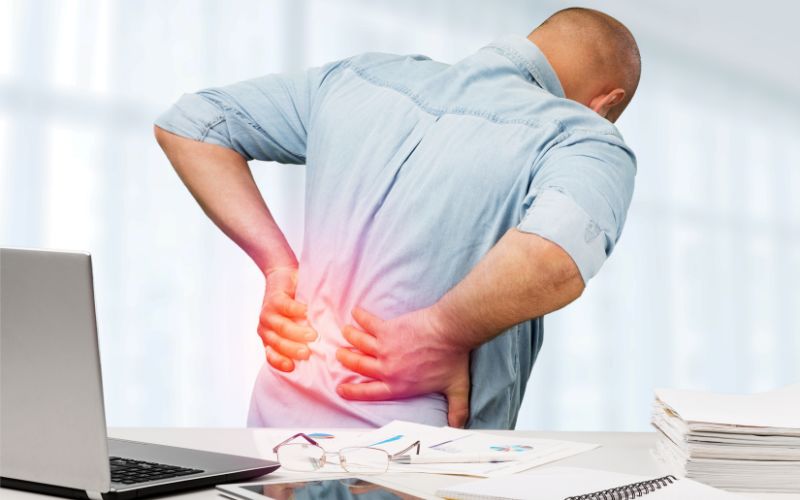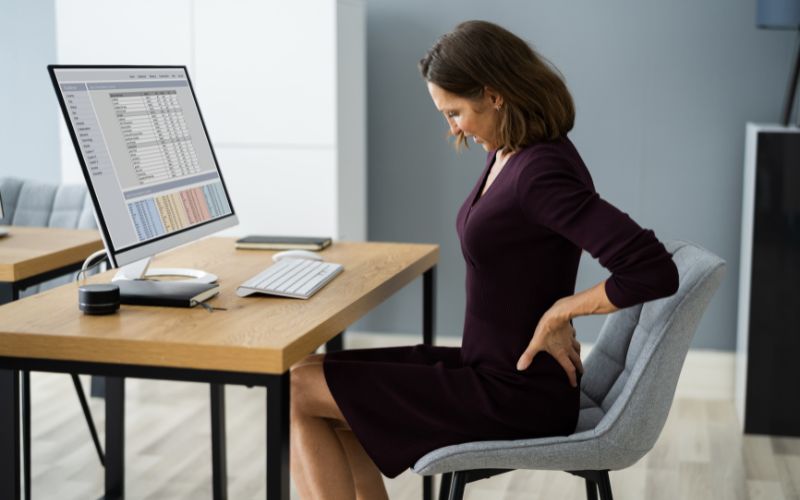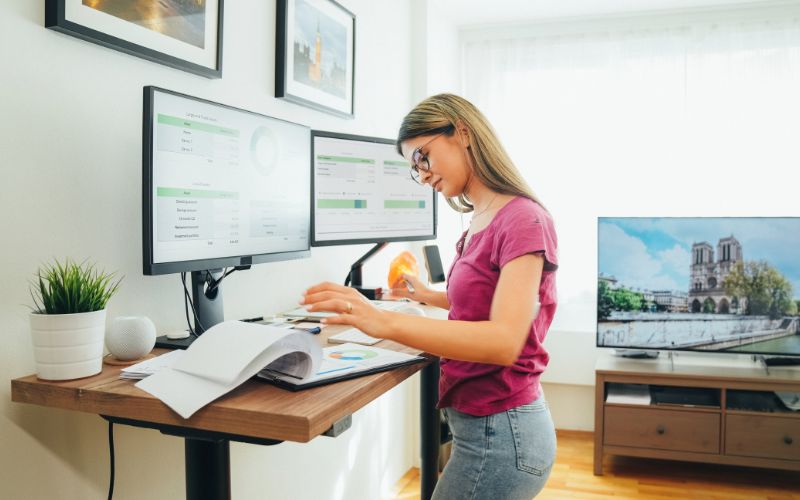In today’s digital age, many individuals spend a significant amount of time sitting at a desk for work or leisure activities. Unfortunately, this sedentary lifestyle can lead to various health issues, with back pain being a common concern. Back pain from sitting at a desk can negatively impact productivity and overall well-being. This article aims to explore the causes of back pain, provide preventive measures, and offer relief strategies for individuals experiencing discomfort.
Understanding Back Pain
Back pain refers to discomfort or pain felt anywhere along the spine, from the neck down to the lower back. It can range from mild to severe and may be acute or chronic. Prolonged sitting can strain the back muscles, ligaments, and discs, leading to stiffness, tension, and pain. Understanding the underlying causes can help individuals take proactive steps to prevent and alleviate back pain.
Causes of Back Pain from Sitting at a Desk
Poor Posture
Sitting with improper posture, such as slouching or hunching over the desk, can strain the back and spine.
Lack of Ergonomic Support
Inadequate desk setup, uncomfortable chairs, or improper monitor height can contribute to back pain.
Prolonged Sitting
Remaining seated for extended periods without breaks or movement can increase the risk of developing back pain.
Ergonomics and Proper Posture
To prevent and manage back pain, it is crucial to maintain proper ergonomics and posture while sitting at a desk. Consider the following recommendations:
Ergonomic Sitting: What Does That Mean?
Ergonomic sitting involves creating a workspace that promotes optimal body alignment and reduces strain on the back. Key elements of ergonomic sitting include:
- Use a chair that provides lumbar support to maintain the natural curve of the lower back.
- Sit with your back against the chair, keeping your feet flat on the floor.
- Adjust the chair height so that your knees are at a 90-degree angle and your elbows rest comfortably at your sides.
- Position the keyboard and mouse at a height that allows your arms to be parallel to the floor, reducing strain on the wrists and shoulders.
Importance of Regular Movement
To alleviate back pain and promote overall well-being, incorporating regular movement and breaks throughout the day is essential. Follow these guidelines:
- Take Frequent Break: Stand up, stretch, and walk around for a few minutes every hour to reduce the strain on your back.
- Micro-Exercises: Perform quick exercises, such as shoulder rolls, neck stretches, or gentle twists, to release tension and improve blood circulation.
- Active Sitting: Consider using an exercise ball or a dynamic sitting cushion to engage your core muscles while sitting, promoting better posture and reducing back pain.
Exercises to Relieve Back Pain
Regular exercise can play a vital role in relieving back pain caused by prolonged sitting. Incorporate the following exercises into your routine:
Core Strengthening Exercises: Engage in exercises that target the abdominal and back muscles to provide stability and support.
Back Stretching Exercises
Perform stretches that focus on the back muscles, such as the cat-camel stretch or seated forward bend.
Yoga or Pilates
Explore yoga or Pilates classes, as these disciplines emphasize core strength and flexibility, which are essential for a healthy back.
Stretching Techniques
In addition to targeted exercises, stretching can help alleviate back pain and improve flexibility. Try the following stretching techniques:
Neck and Shoulder Stretches: Perform gentle stretches to relieve tension in the neck and shoulder area.
Upper and Lower Back Stretches: Stretching exercises like the child’s pose or the cobra pose can help alleviate back pain and improve flexibility.
Hip Flexibility Exercises: Stretching the hip flexor muscles can also contribute to relieving back pain caused by prolonged sitting.
Benefits of Incorporating Standing Desks
Sitting for extended periods can be detrimental to your back health. Incorporating a standing desk into your workspace can offer several benefits:
Improved Posture
Standing encourages a more upright posture, reducing strain on the back and promoting better spinal alignment.
Increased Movement
Standing allows for more freedom of movement, enabling you to shift positions and engage different muscle groups throughout the day.
Enhanced Circulation
Standing promotes blood flow and prevents the pooling of blood in the legs, reducing the risk of developing circulation-related issues.
Ergonomic Standing Desk: A Solution for Back Pain
An ergonomic standing desk combines the benefits of standing and proper posture. When using a standing desk, ensure the following:
- Adjust the desk height to maintain a comfortable position, with your elbows at a 90-degree angle and your wrists in a neutral position.
- Use an anti-fatigue mat to cushion and support your feet.
- Alternate between sitting and standing throughout the day to avoid prolonged static positions.
Back and Neck Massager for Pain Relief
If you experience persistent back pain from sitting at a desk, incorporating a back and neck massager into your routine can provide relief. These devices help relax muscles, improve blood circulation, and reduce tension in the back and neck. Consider using a portable massager or seeking professional massages to alleviate pain and promote relaxation.
Maintaining a Healthy Lifestyle
In addition to ergonomic considerations and exercise, maintaining a healthy lifestyle contributes to overall back health. Consider the following factors:
- Diet and Nutrition for a Healthy Back: Consume a balanced diet rich in nutrients that support bone health, such as calcium and vitamin D. Stay hydrated to maintain spinal disc hydration.
- Stress Management and Relaxation Techniques: Chronic stress can exacerbate back pain. Incorporate stress management techniques like meditation, deep breathing exercises, or engaging in hobbies that promote relaxation.
When to Seek Professional Help
While most back pain from sitting can be managed with self-care measures, there are instances when professional help is necessary. Consider the following scenarios:
What to do if your back hurts from sitting too long?
If your back pain persists despite implementing preventive measures and self-care strategies, it may be advisable to seek medical attention. A healthcare professional can assess your condition, provide a proper diagnosis, and recommend appropriate treatment options.
What is the most common back pain from sitting?
The most common type of back pain from sitting is often attributed to muscle strain or tension caused by poor posture, prolonged sitting, or lack of ergonomic support. It is essential to address these underlying causes to alleviate the pain effectively.












